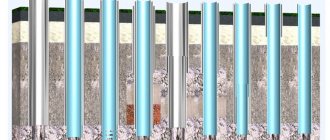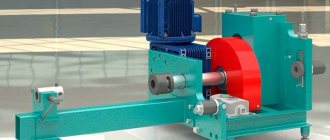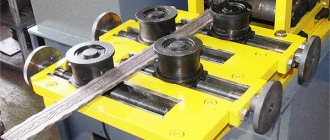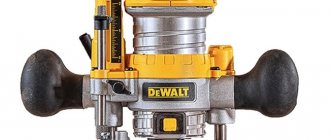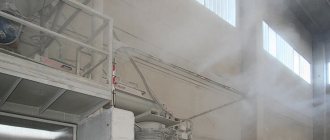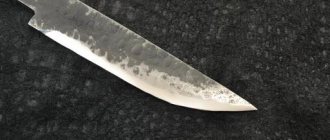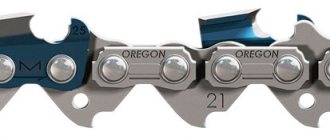Modern processing of materials and production of complex parts involves the use of high-precision machines. High-precision equipment means that the parts from which it is made are also high-tech and precise. And each type of machine has its own requirements for these parts.
To achieve the required processing accuracy of an entire batch of products, it is necessary to ensure that all necessary operations are carried out accurately and that they are repeated many times without errors. This task is successfully performed by computer numerical control (CNC) machines.
The movement of the workpiece, the processing tool and the associated structural elements of the machine is provided by guides .
Device
The most general description of a guide: it is a unit that ensures the movement of the workpiece, tool and associated elements along the desired path with a given accuracy .
The main parts of the guide are a durable shaft or profile guide and moving units moving along them , carrying the working elements of the machine.
Design solutions for the guide, as well as ensuring movement along it, are very diverse and are subordinated to the implementation of specific metalworking tasks.
Hiwin type profile rail guide device
Polished shafts
They are characterized by affordability and ease of installation, which reduces repair costs. They are not recommended for use as guides for moving tables whose flow exceeds 1 m, since fastening to the frame at two points leads to sagging under loads. At the same time, they are suitable for moving the spindle along the Z axis, provided that the spindle is not loaded (engraving, cutting thin sheet metal, wood carving, etc.) and is balanced by a counterweight.
Flaws:
- when using rolling bearings, pressure from the ball is applied at one point, and over time a groove is pressed at this point;
- increased sensitivity to chips and dust;
- impossibility of fitting the bearing to the shaft and creating preload.
However, these disadvantages are offset by the low cost and ease of replacing the shaft, and the problem of dust and shavings in wood and stone processing workshops is solved by installing a hood with a socket directly in the work area.
Work principles
The guides of a CNC machine are secured so reliably that even their minimal shifts during operation of the equipment are excluded - under the influence of weight, movement or vibration of working units.
In the process of processing workpieces along guides, under the control of a given program, the functional units of the machine are moved without difficulty and firmly fixed, ensuring the completion of the necessary work operations.
Depending on the method of moving the moving unit, sliding, rolling and combined , which combine both rolling and sliding movement.
Sliding guides , in which the surface of the shaft is in direct contact with the sleeve moving along it , are subject to significant frictional forces, which during operation change significantly in direction and strength. Friction load wears out the guides. In addition, the performance of sliding guides is greatly affected by the difference between the friction force at rest and the friction force during movement.
At low speeds, due to this difference, the movement of working units occurs spasmodically - this is unacceptable for CNC machines.
To reduce the influence of friction forces, anti-friction plastic linings are used, as well as a number of other ways to reduce these forces. Depending on how friction is reduced, sliding guides are divided into hydrostatic, hydrodynamic and aerostatic.
In hydrostatic lubrication, liquid (oil) lubrication is present at any sliding speed, and accordingly, uniformity of movement and high accuracy are ensured.
Such guides have two problematic aspects: a complex lubrication system, as well as the need for special fixing devices to secure the moved unit in the desired position.
Hydrostatic guides are equipped with special oil pockets into which lubricant is supplied under pressure and flows out, creating an oil layer along the entire length of the contact surfaces. The layer thickness is adjustable.
Hydrodynamic ones effectively reduce friction due to the “floating” of the moving unit in the oil, which fills the gaps between the lubrication grooves on the working surfaces of the guides when the moving units move along them.
Hydrodynamic guides work well only at significant sliding speeds.
The problem areas are acceleration and braking of the moving part.
Aerodynamic ones operate on a cushion of air.
Structurally, they are similar to hydrostatic ones; they have pockets into which air is supplied under pressure.
Compared to an oil cushion, an air cushion can withstand less weight and dampen shocks and vibrations worse.
The air supply paths, as well as the gap between the separated surfaces, easily become clogged.
At the same time, unlike hydrostatic guides, aerostatic guides do not require additional fixation: immediately after the air supply is stopped, the moving part fits tightly onto the shaft.
Roller guides , in accordance with the shape of the bearings, are ball and roller. With comparable dimensions, roller ones can withstand more significant loads. Structurally, they consist of a set of “rail-carriage”, “linear bearing-shaft”, “rail-rail with flat cage” .
Such guides have reduced friction, ensure precise movement and stopping in the desired position; at low speeds, movement along them does not lose smoothness. Lubricating the roller guides is also easy.
At the same time, they have a higher cost, dampen shocks less well, and are more sensitive to contamination than sliding guides.
Combined guides combine sliding along some faces with sliding along others. This type of guides is the most widespread and combines both the advantages and disadvantages of rolling and sliding guides.
Advantages over other types of guides:
- unlike cylindrical guides, the profile rail is attached to the support at several points, which helps prevent sagging under the influence of loads from the spindle or table;
- raceways are cut out on the side surface. The profile of contact with the ball in the carriage bearing is an arc, and not a point, as in shafts on supports, this increases the wear resistance of the guides.
Profile guides are sold both as separate rails and as a set with carriages. The second option, due to the nature of production, is preferable. After manufacturing, the profile of the guides is measured on a stand; based on the measurement results, they are marked with numbers indicating the deviation from the nominal size. The carriages are also marked. The assembly is carried out in pairs, taking into account deviations, due to which the absence of backlashes and the rigidity of the system are achieved. Backlashes that arise during operation due to wear are eliminated using side pressure plates.
Guide preload class
When choosing guides, the compliance of operating conditions with the preload class is taken into account. It increases internal stresses, which, during work not associated with shock loads (shallow engraving), reduces service life. At the same time, in conditions of strong vibrations (rough processing and deep engraving on stone), preload dampens deforming forces and extends service life.
Classification, areas of application, advantages and disadvantages
The shape of the guide shaft can be linear or circular; they are placed horizontally, vertically and obliquely. The guides are secured either along the entire length or only at the end sections.
Linear guides are divided according to the shaft profile
Cylindrical rail guide
Cylindrical rails ( polished shaft ). The cross-sectional shape is circle. The polished shaft is the most inexpensive and widespread guide, easy to process and install: only the ends are fixed. The surface of such a shaft is hardened, its smoothness is almost perfect, and the movement of bearing couplings along this surface occurs with very little friction.
However, where there are advantages, there are also disadvantages: ease of fastening means, at the same time, the absence of a rigid connection with the work table and sagging in the case of significant length and/or load.
The “ball bearing-polished shaft” set is notable for its low price. At the same time, the movable bushings have a small load-carrying capacity . As a rule, there is play , which increases with use. The service life under normal temperature conditions is 10,000 hours, but when the working area heats up, it is significantly reduced.
Guide with splined shaft
The guide with a splined shaft has profiled straight grooves and raceways along its entire length, intended for additional fastening of the bushings moving along the shaft with the working units of the machine. At the same time, the backlash, compared to a polished shaft, is significantly reduced and, due to the more complex manufacturing technology, the price of such guides increases.
Guides with flat rails of rectangular cross-section, as a rule, are profiled with splines for the used rolling elements.
Thus, ball profile guides provide precision movement , actual straightness , and load capacity . They have low backlash . They are wear-resistant . They are used to complete robotic lines, in metal-cutting machines and precision metalworking
profile rail guide type hiwin with roller and ball rolling elements
At the same time, installing such rails is quite difficult; high requirements for straightness and roughness. In terms of cost, due to the complexity of production, they are much less accessible than polished shafts.
Roller profile guides have flat raceways. Rollers are installed in the support modules. Even more load-bearing, tougher and more durable than ball splines. Used in milling machines with high loads.
Prismatic dovetail guide
Prismatic guides with triangular cross-section rails and dovetail with a trapezoidal cross-section are used where connections of increased rigidity , for example, in metal-cutting machines.
In particular, dovetail guides are made with the frame as one unit. Manufacturing and repairing dovetails are complex procedures that require a lot of labor. At the same time, they provide high-precision movement of moving elements .
Specifications
Due to their design, the guides provide only one degree of freedom when the moving unit moves along them.
Due to their “type of activity,” they must have high strength and wear resistance.
Therefore, the main materials for the manufacture of their supporting parts (shafts and rails) are:
gray cast iron . It is used in the manufacture of guides, which are integral with the frame.
Steel. It is used for the manufacture of removable and overhead guides. Hardened steels with high hardness (60-64HRC) are used, for example, grade 40X with high-frequency hardening.
The manufacture of guides provides for such a length that ensures complete coverage of the bed or extension to the required dimensions.
Accuracy standards for the manufacture of guides are standardized and amount to 0.02 mm permissible deviation for a length of 1 meter .
The permissible surface roughness and overall dimensions are also regulated in accordance with the working load.
In particular, on small machines with a working field of 30x40 cm, the diameter of the guides should be 2.5 cm.
The area of the working field and the hardness of the material being processed also determine the required class of guides. Thus, with a working area of more than 0.7 m2, processing steel blanks will require only profile rails. The more budget option of a polished shaft is unsuitable in this case.
For each specific area of work, a calculation is carried out using developed algorithms to determine the optimal option for the parameters of the machine guides.
To reduce the coefficient of friction, metal-plastic sliding pairs are used, with plastic nozzles being fluoroplastic, Teflon, torsite and similar materials.
To ensure smooth movement of hydrostatic and combined guides, specialized “anti-jump” oils are used.
Linear guides for machine tools
All parts, machine parts, equipment and machines used in various fields of mechanical engineering are produced in a special field of mechanical engineering - machine tool building. No matter how small or large, light or heavy, complex or precise the part, all the characteristics of the machine for its production are a step above the complexity and accuracy of the part being manufactured. THK linear systems provide this precision, complexity and speed.Linear guides
- ball guides
- roller guides
- miniature guides
Ball Screws
- standard ball screws
- high precision ball screws
- rolled ball screws
Shafts and bushings
- splined shafts
- ball bushings
Actuators, linear drives
Horizontal machining center
The most complex and precise among metal-cutting machines are machining centers. High-precision and rigid linear guides with a cage and ball screws (ball screws) are used both for work tables that position and move the workpiece quickly and with high precision, and for moving the processing tool. Cross roller bearings (slewing rings) – ensure smooth rotation of the turntables.
Guides for milling machines
Although machining centers and CNC lathes have become the most popular products in the machine tool industry, milling machines retain their scope of application in advanced areas of mechanical engineering. The most advanced machines that allow processing parts with ultra-high precision can only work under the supervision of highly qualified workers. To eliminate this highly skilled but manual labor, THK supplies ball screws and linear guides for milling machines, which are used in linear motion systems and avoid unnecessary movements of machining units and workpieces.
Guides for CNC (Computer Numerical Control) lathes
Along with machining centers, CNC (Computer Numerical Control) lathes play an important role in mechanical engineering. THK lathe guides and ball screws are in demand for moving lathe tool holders due to their high rigidity and precision. The compact design of THK linear systems helps reduce equipment size.
Guides for longitudinal milling machines
A longitudinal milling machine is a large milling machine. Obviously, the workpiece for such a machine is also large and heavy. However, if THK high rigidity linear guides are used to move the work table, the table moves smoothly and with high precision.
Guides for CNC gear hobbing machines
In gear hobbing machines, which produce gears for gearboxes for various purposes, linear sliding guides have traditionally been used. Their design was complicated by piping and a control and lubricant supply system. It is possible to simplify the design and increase the time between maintenance by using linear guides and THK lubricated ball screws.
Guides for grinding machines
Until recently, hydraulic cylinders were used to move the worktable with the workpiece. Servo systems with ball screws are now used to move the worktable. This solution increases the speed and accuracy of positioning and increases the productivity of the machine. It does not require the use of a hydraulic system, which promotes cleanliness and eliminates harmful effects on the environment.
To buy guides for machine tools or ball screws for machine tools, please send their designations, necessary characteristics and information about operating conditions.

